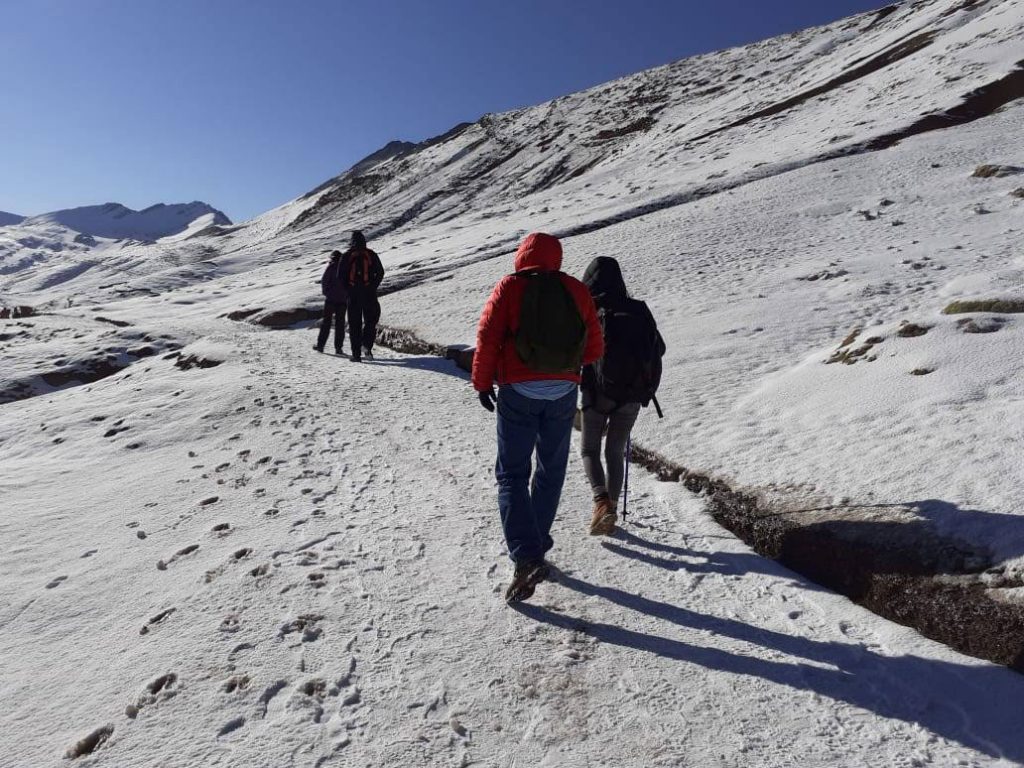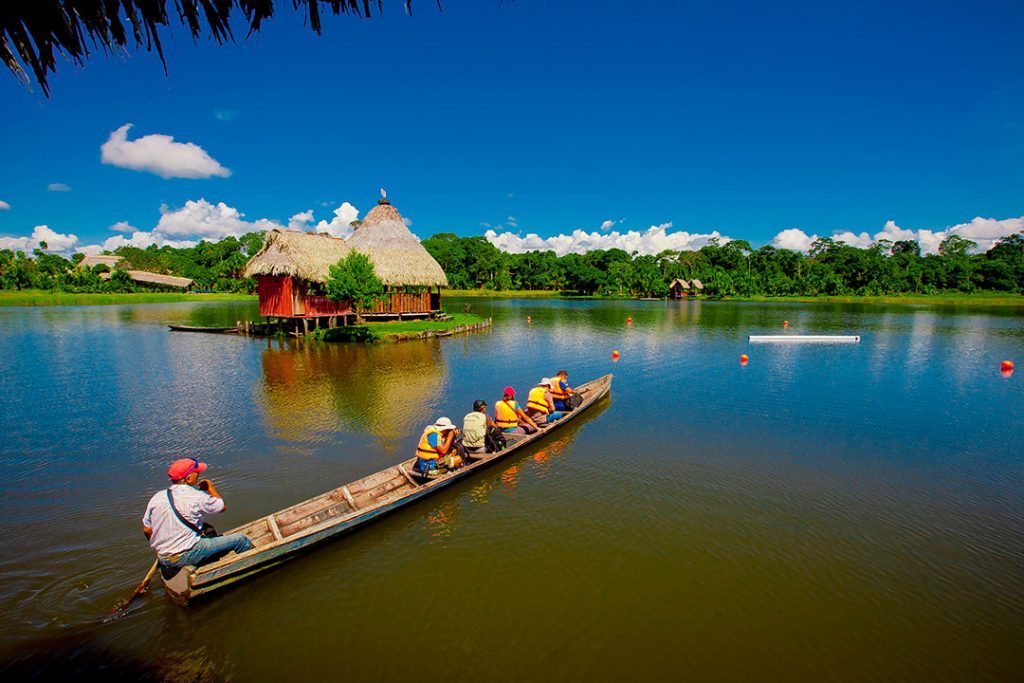Peru is a large country with more microclimates than anywhere else on the globe. So it’s not hard to imagine that the weather across the whole country can be quite different. Peru weather is characterized by two main seasons, the wet and dry seasons. Their summer and winter are the same as everywhere else in the southern hemisphere but change across the country.
In this article, we’ll go over what to expect from Peru weather, specifically the coast, mountain region, and jungle. Once you’ve read through it all, you should have a much better idea about what to expect from the country weather-wise and this will make it easier to plan the perfect vacation in Peru.
To clarify, here are the most important cities or points of interest in the regions we’ll talk about.
- The Coast – Lima, Nazca, Arequipa
- The Mountains – Cusco, Puno & Lake Titicaca
- The Jungle – Puerto Maldonado, Iquitos, Manu National Park
When Are the Wet and Dry Seasons in Peru?
We’ve already established that there are two principal seasons in Peru, which are wet and dry. They tend to be similar across the country, but do differ slightly, The type of rainfall is also different in each region. Let’s take a closer look at the coast, mountains, and jungle to determine when it rains most and when you can expect sunny days.
Coast
Wet
The wet season by the coast is between May and November. The temperature drops slightly and, in Lima especially, you’ll find that instead of heavy rain, there’s more of a mist that covers the city The rain is very fine and the skies are grey throughout this season.

Dry
The dry season is from December to April by the coast, which is the Peruvian summer. Thousands of nationals flock to the region for their vacations in January and February. The weather tends to be very hot and dry and you likely won’t see any rain. The temperature can range anywhere between 25 – 35°C.

Mountains
Wet
If you’re looking to head up to the mountains on your vacation, then you’ll want to know that the rainy season is from November to April. Throughout these months, you should expect to see a little bit of rain most days. It doesn’t usually rain for more than an hour or so in the afternoons, though. The days are still usually sunny and warm. January and February are the wettest months.

Dry
The dry season is from May to October, and you can expect plenty of sunny days and clear blue skies. The nights can get very cold, though, especially in June and July when it goes below 0°C.

Jungle
Wet
The climate in the jungle is very different from the coast and mountains, mainly due to the humidity. You can expect very heavy showers at any time of the day or night, although the rainfall doesn’t tend to last more than a few hours, so you can still enjoy a visit. Rain boots are an essential item during this time of year.

Dry
Despite the name of the dry season, you might still feel wet due to the humidity and sometimes there are small showers. It can get very hot, too, with day temperatures going up to 30 – 35°C. However, at night it can drop dramatically, especially when a cold front comes over from the South Atlantic.

What’s the Best Month to Go to Peru?
Again, the answer to this question will depend on the region. Here are our suggestions for each region.
Coast
The best time to head to the Peruvian coast is during their summer, particularly January and February. It’s no coincidence that the nationals holidays to the oceanside during this time of year. The temperature is very warm and you can expect sunny days and no rain.
Do be warned, though, that there’ll be a lot of people about because the children are also off school for two months after Christmas.
It’s worth noting that in the north coastal region of the country, they enjoy almost a whole year of sunshine and pleasant climate, which is why the city of Trujillo is known as the ‘city of eternal spring’.
Mountains
If you want to go to the mountains, the nicest months of the year climate-wise are just before or just after the wet season, so May and October. This is because the climate is very pleasant, so no rain or cold nights, and there are also fewer tourists.
In Cusco during June, there are a lot of festivities and there’s some kind of celebration happening every day. So, if you want to see more of what the culture has to offer, this is the best time of year. Expect chilly nights, though, and big crowds at tourist attractions.
Jungle
You can be a little more flexible when planning a trip to the jungle because, despite the rain in the wet season, the climate is usually warm, which makes it pleasant all year round. Just be aware that the rain can be very heavy when it comes, so if this will impact your enjoyment, consider coming in the dry season.
What Is the Average Temperature of Peru?
The temperature doesn’t change a lot throughout the year in the different regions of Peru, so here’s what to expect.
Coast
By the sea in Lima and the south, the average temperature throughout the year is 26°C, but it can get as high as 33°C and go down to 15°C. In the north, you can expect very warm days almost year-round of around 35°C.
Mountains
In the mountains, you can expect an average temperature of around 18 – 20°C throughout the year during the day. At night it can go down to as much as below 0°C in June and July.
Jungle
In the jungle region of the country, you can expect an average temperature of between 24 – 25°C throughout most of the year with a high of 35°C and a low of 16°C.
What Is the Coldest Month in Peru?
Now, let’s look at what the coldest month is in each of the regions.
Coast
The coldest time of year by the Peruvian coast and desert region is in September. With no sun shining, you’ll find it gets very cold, all thanks to the chilly Humboldt Current.
Mountains
The coldest months in the mountains are June and July when it can go below 0°C at night. However, you can still expect warm days with clear skies.
Jungle
The coldest months in the Peruvian jungle are also June and July, which is when the cold fronts come up from the Arctic and cause the nights to be very chilly. However, this is nothing like the cold you’d feel in the mountains.
Does the Peru Weather Affect Flights?
Peru weather can affect flights if there is very heavy rain. However, this doesn’t happen often and you’ll usually be up in the air within the next couple of hours. The weather can sometimes affect buses, especially those that go from Cusco to Puerto Maldonado and sometimes means that they won’t pass. During the wet season, it’s a good idea to fly if you want to travel between these two places.
What to Pack When Visiting Peru?
As you can see, Peru weather is very changeable and it’s different in every region, which means you need to take great care when packing. You need to ensure you have all the essential items but also don’t want to be carrying a lot of weight around with you.
We’ve come up with the ultimate packing list to help you put together everything you’ll need when you plan on visiting a variety of places in Peru.
- Passport and a copy
- Flight tickets and a copy
- Travel insurance and copy
- Clothes for the cold weather
- Clothes for sunny and humid weather
- A rain jacket
- Thermals
- Hiking boots or shoes
- Walking sticks
- Sleeping bag
- Bug repellent
- Camelbak
- Day pack
- A high factor sunblock
- Chapstick for the dry climate in the mountains
- Sunhat and sunglasses
- Bathing suit
- Sandals
- Sneakers
- Travel adaptor
- Camera or phone with a high-quality camera
- Portable charger
- Flashlight
- First aid kit
- Sanitizing wipes
- Toiletries
- Small towel
- A padlock for bags and belongings
Peru Weather Top Tip
If there’s one thing you absolutely need to know about Peru weather, it’s that it’s unpredictable. Wherever you are, you could be enjoying the sun one minute and then find it starts to rain the next. Our best advice for this is to be prepared for any type of weather and always carry a rain jacket or lightweight poncho in your day pack.
Time to Plan Your Trip
After reading through our ultimate guide to Peru weather, you should have a better idea of what to expect when you come and be able to plan your vacation for the time of year that suits you. You won’t have any unpleasant surprises when it rains every day because you came during the wet season.
Wherever you go in the dry season, you’ll see that there are a lot of other tourists about as this tends to be during the high season. You’ll find the main attractions are very busy and that hotels and trips might be sold out, so you need to book in advance.
If you decide you want to stay away from the crowds or enjoy some special offers, then we recommend you come in the wet season or just either side of it. Whatever you decide, we hope to see you soon!
Written by: Liv Palmer












Leave A Reply